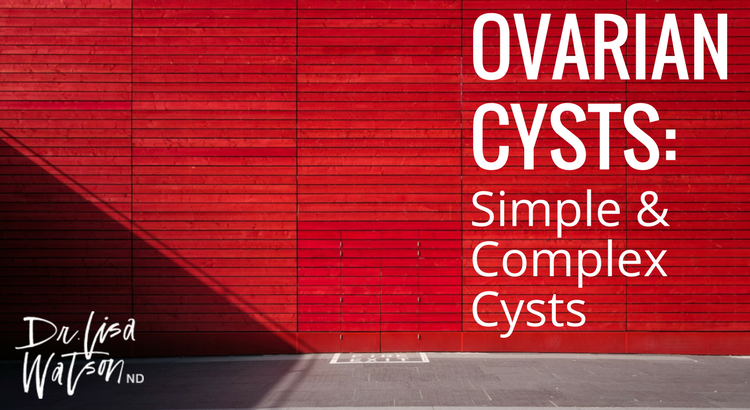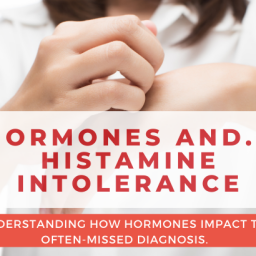
Ovarian cysts are small growths that form on or inside of the ovary. Many women are diagnosed with ovarian cysts on routine ultrasounds, and others are diagnosed when they experience changes in their menstrual cycles or painful periods. Often women are told they have cysts without really understanding what that means. This article will give you the knowledge you need to understand your diagnosis, and empower you to select the best treatment options for you and allow you to restore your optimal hormone health.
Simple Ovarian Cysts
 Simple ovarian cysts are by far the most common type of ovarian cyst. A simple cyst forms when an egg fails to be released by the ovary at ovulation, or when the follicle the egg developed in continues to grow after ovulation. Simple ovarian cysts develop with exposure to estrogen, and are sometimes called ‘functional’ cysts.
Simple ovarian cysts are by far the most common type of ovarian cyst. A simple cyst forms when an egg fails to be released by the ovary at ovulation, or when the follicle the egg developed in continues to grow after ovulation. Simple ovarian cysts develop with exposure to estrogen, and are sometimes called ‘functional’ cysts.
Simple cysts often have no symptoms and will resolve on their own with time. Simple cysts are often found in a condition called Polycystic Ovarian Syndrome (PCOS) where many simple cysts develop and symptoms such as a lack of periods (amenorrhea), irregular periods, infertility, acne, hair loss or facial hair growth can occur.
Complex Ovarian Cysts
Complex cysts are much less common and are not formed during a typical menstrual cycle. There are three different types of complex ovarian cysts:
- Cystadenomas – ovarian tissue filled with fluid or mucus
- Dermoid cysts – composed of cells you have had since before you were born. Dermoid cysts contain cells that are used to produce dermal tissue, so they can contain skin, hair, fat, or teeth.
- Endometriomas – a result of endometriosis. Endometriomas occur when cells from your uterine lining grow on or in the ovaries.
Complex ovarian cysts are most often benign, especially those that develop before menopause. Some ovarian cysts can be malignant so it is important to have them assessed fully.
Symptoms of Ovarian Cysts
Most simple ovarian cysts do not cause any symptoms at all. Some symptoms that may alert you to the possible presence of simplex or complex cysts include:
- Bloating, pressure, or pain in the low abdomen
- Frequent urination (if the cyst is large and pressing on the bladder)
- Sudden severe pain (if the cyst ruptures)
If you have endometriomas – cysts associated with endometriosis, you may experience:
- painful periods
- pain during sex
- pain during bowel movements
- infertility
What Causes Cysts?
Simple cysts (like those in PCOS) are the result of hormonal and metabolic issues. You can read more about PCOS in these articles, Understanding PCOS, PCOS Types and Diagnosing PCOS.
Complex cysts can be present from birth and grow under hormone stimulation after puberty. Endometriomas, another complex cyst, occur when the lining of the uterus grows outside of the uterus, including on the ovaries. Cystadenomas can occur when ovarian cells mutate and grow (most often these are benign, but can be cancerous).
 Diagnosis of Cysts
Diagnosis of Cysts
Most cysts are diagnosed with a transvaginal ultrasound. Some can also be detected with a simple pelvic exam. Often the type of cyst can be identified with an ultrasound, but occasionally a biopsy or blood test (such as CA-125) may also be used.
Treatment of Cysts
Simple cysts are easily treated with Naturopathic approaches – hormone balancing, blood sugar stabilization and improved ovarian response are common treatment goals.
Some complex cysts require no treatment, but some may need to be removed if they are large or causing significant symptoms. Most often the cyst is removed through a simple surgery caused laparoscopy.
Endometriomas are treated in the same manner as other types of endometriosis. If you have endometriosis, please read the Endometriosis series of articles written by Dr. Lisa on this website.
If you have any more questions about your ovarian cysts, don’t hesitate to get in touch! You can send Dr. Lisa an email or book a free 15 minute meet and greet here.
















